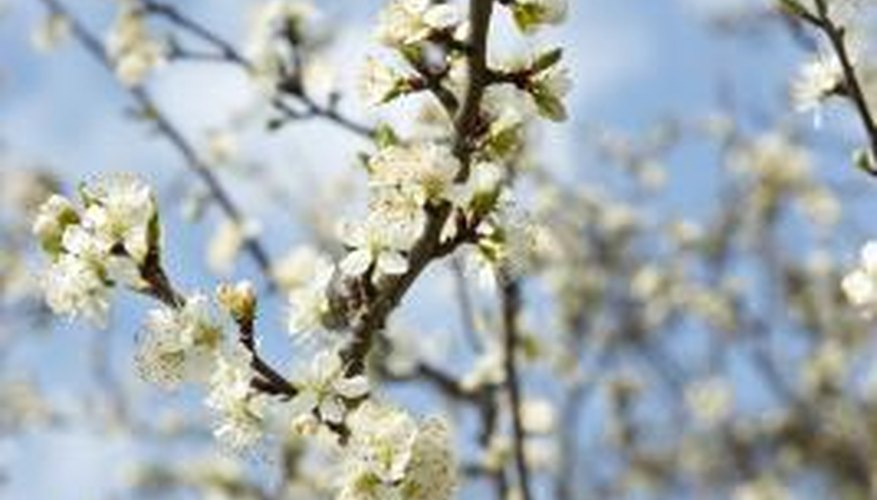No one likes to trip on a cracked sidewalk, or trip over a root sticking up in the yard. Chopping out the root will only cause the tree stress, and the roots will grow back. Ornamental pears unfortunately have this problem due to the nature of their root system. But with proper spacing and siting, you can enjoy the many benefits an ornamental pear tree has to offer.
Root Systems
An ornamental pear has very shallow root systems and can become a nuisance as the tree matures and the large roots push up through the surface. If an ornamental pear is planted too close to a sidewalk, driveway or foundation, the limited space will force the tree to break through cracks in the concrete, asphalt or breeze blocks. Roots looking for water and nutrients can penetrate these tough materials and create trip areas. Properly spacing your ornamental pear tree will help to prevent some of these problems.
- An ornamental pear has very shallow root systems and can become a nuisance as the tree matures and the large roots push up through the surface.
Spacing Is Key
There are many cultivars of flowering ornamental pears, but an average height is 30 feet by 25 feet wide. Trees should be planted at least their widths' measurements from foundations, sidewalks and driveways. Young feeder roots grow to the width of the canopy, catching dripping rainfall for uptake. If you buy a variety of ornamental pear that only gets 15 feet wide, you should plant your tree 15 feet from any structure to prevent damage from the roots.
- There are many cultivars of flowering ornamental pears, but an average height is 30 feet by 25 feet wide.
Ornamental Pear Landscape Uses
Ornamental pears bring several attributes to the landscape that make them a nice selection for a small shade tree, specimen plant or mass screen plantings. The white, five-petaled spring blooms are showy and have a distinctly strong, sweet smell. The summer foliage is shiny green, with many varieties lacking messy fruit. This makes it a nice alternative to crabapples. Fall colour ranges from red, orange, purple and yellow, and is one of the strongest attributes of this tree.
- Ornamental pears bring several attributes to the landscape that make them a nice selection for a small shade tree, specimen plant or mass screen plantings.
- The summer foliage is shiny green, with many varieties lacking messy fruit.
Cultivars
There are many cultivars available for Pyrus calleryana. "Aristocrat" has a pyramidal shape that is hardier than "Bradford." "Autumn Blaze" has a consistent reddish, purple colour, for which it is often selected. "Chanticleer," also known as "Cleveland Select," is a nice upright form that will grow only 35 feet high and 16 feet wide. "Capital" is even more upright, growing to only 8 feet wide. Capital makes a nice substitution for Lombardy poplars for screen planting.
- There are many cultivars available for Pyrus calleryana. "
- Chanticleer," also known as "Cleveland Select," is a nice upright form that will grow only 35 feet high and 16 feet wide. "
